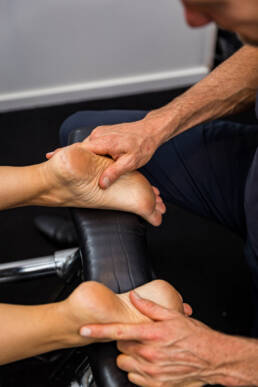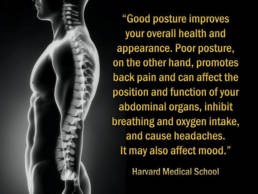Leg Length Inequality
Leg length inequality affects 60 to 90 percent of the population, though many people are unaware they suffer from the condition.

Leg Length Inequality
Leg length inequality affects 60 to 90 percent of the population, though many people are unaware they suffer from the condition.

Miami, Queensland
Leg Length Inequality
Leg length inequality, often referred to as leg length discrepancy, affects between 60 and 90 percent of the population, though many people are unaware they suffer from the condition. Discrepancies in leg length often result in abnormal structural shifts within the spine, which trigger a variety of debilitating symptoms including back, hip, knee and even neck issues.
Leg length inequality is often likened to a vehicle with misaligned, unbalanced tires — when the tires are out of alignment, the tread wears unevenly, resulting in wobbling, altered steering and poor performance on the road. In the human body, this phenomenon results in abnormal movement patterns, mobility issues and ultimately, discomfort.
At Revolution Chiropractic, we approach leg length inequality from an engineering perspective. Much like a vehicle cannot function optimally unless it’s properly balanced, neither can the human neuromusculoskeletal system. By locating and correcting underlying structural abnormalities, we can restore normal functioning, relieve discomfort improve performance and even help in preventing further injuries.
What to Expect With Leg Length Inequality Treatment
Leg length inequality disrupts the normal structural balance of the neuromusculoskeletal system, often resulting in spinal subluxations, muscular imbalances and abnormal movement patterns. In many cases, spinal misalignment is the cause of leg length inequality; so, to correct the discrepancy and restore normal functioning, we must first locate its root cause.
During your initial evaluation, you’ll undergo a comprehensive physical exam, which will include digital structural x-rays to determine the cause of your leg length discrepancy. Our focus is on objective, precise measurements of the spine, pelvis, hips and legs so that he can progressively monitor your improvement as he brings your body back into proper alignment. If necessary, you may also be prescribed an orthotic heel lift if the cause of your leg length discrepancy is anatomical in nature.
Mobility Improvement
As we correct subluxations of the pelvis, hips and spine, we gradually correct the length discrepancy and allow the musculoskeletal system to function normally. When both legs are the same length, structural and muscular imbalances improve, which gradually corrects abnormal movement. As we help you correct your movement patterns, you’ll experience mobility improvements and increased range of motion.
Gait Improvements
When your spine, hips and pelvis are misaligned, they can cause a discrepancy between the length of each of your legs. When leg length is asymmetrical, you often compensate for the difference by altering your movement patterns. Because the neuromusculoskeletal system is designed to move in a specific pattern, alterations to this pattern can affect your ability to walk normally. As we progressively restore symmetry and correct subluxations in the pelvis, hips and spine, you’ll notice that your ability to walk improves significantly.
Pain Relief
Because asymmetrical leg length dramatically affects your gait, the condition has profound effects on the biomechanics of your lower body. As a result, you may experience low back pain, hip pain, knee pain and even neck pain depending on the severity of your condition. As we progressively correct the alignment of the pelvis, hips and spine, we reestablish symmetrical leg length. As a result, you’ll experience a significant reduction in discomfort.
What Conditions Benefit from Leg Length Inequality Treatment?
A variety of conditions can benefit from regular chiropractic treatments for leg length inequality, including:
- Poor posture
- Low back and neck pain
- Knee pain
- Hip pain
- Abnormal gait and walking problems
- Muscular imbalances
Frequently Asked Questions
An anatomical leg length discrepancy occurs when the bones of one leg are anatomically shorter than the other. This type of inequality may occur as a result of genetics, growth plate fractures, trauma, infections, degenerative orthopedic conditions or surgery, among other causes.
A functional leg length discrepancy occurs when the pelvis, hips or spine move out of proper alignment. Asymmetrical muscle weakness and shortening may also contribute to this type of leg length inequality. Unlike an anatomical LLD, the bones within both legs are the same length; the legs simply appear to be different lengths as a result of abnormal structural shifts.
At our Miami, Queensland clinic, we highly recommend ongoing chiropractic treatments for leg length inequality. Though you’ll experience mobility improvements, pain relief and improved function, it’s exceedingly easy to fall back into your old movement patterns without ongoing treatment. We’ll work with you to establish normal, healthy movement patterns that encourage proper musculoskeletal alignment, so you can continue to move and function normally. The frequency of care recommended is very manageable, as correction and then prevention is key.


